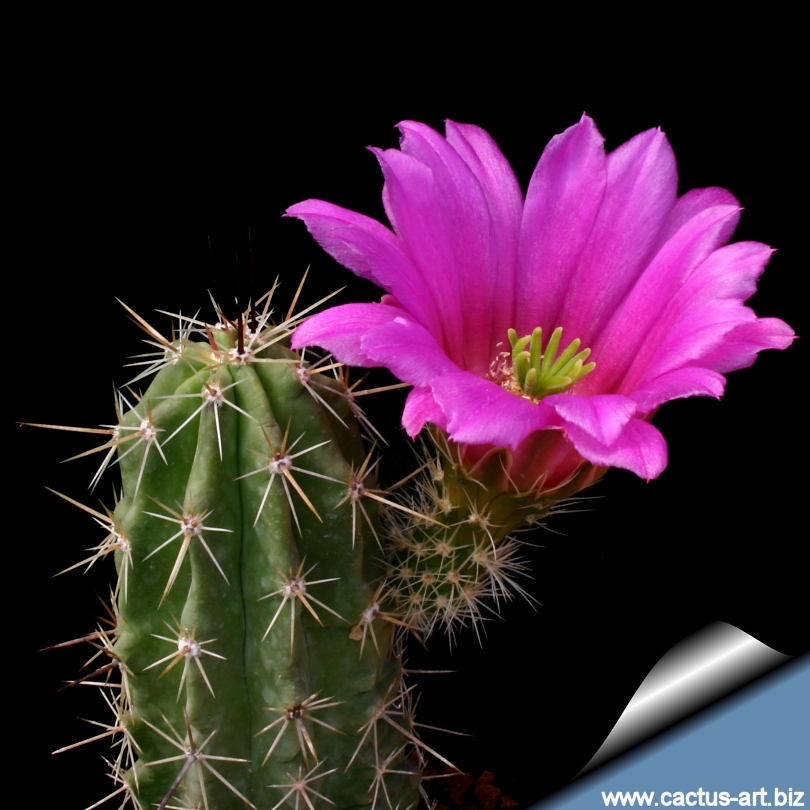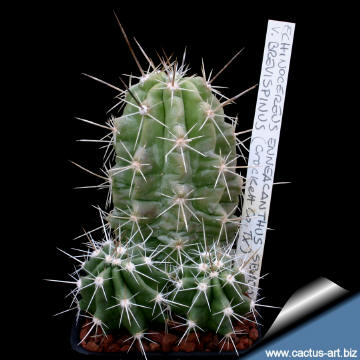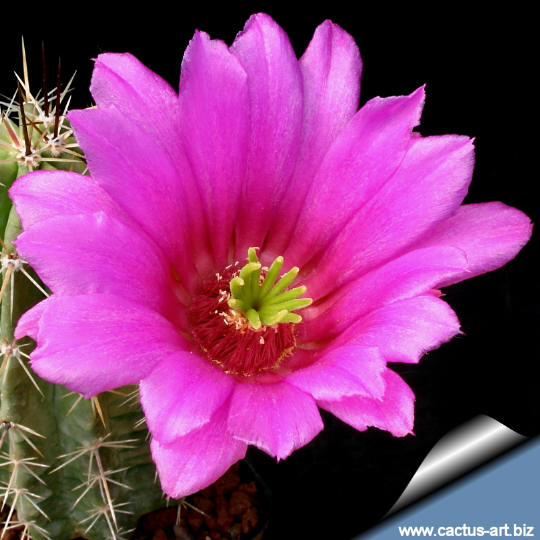|
|
|

Echinocereus
enneacanthus var. brevispinus
SB400 Crockett County, Texas, USA
The plants of this variety have very short spines.
|
|
 Description: Plants caespitose forming dense
or lax clumps either loose decumbent, or erect with 20-100(-500)
branches, usually branching before flowering. , Description: Plants caespitose forming dense
or lax clumps either loose decumbent, or erect with 20-100(-500)
branches, usually branching before flowering. ,
Stems: 5-14 cm diameter up to over 100 cm long, The stems of this
species are soft bright green and often remain wrinkled.
Ribs: 7-12 prominent warty.
Areoles: 18-52 mm apart.
Radial spines: Curved needle-like brownish, bulbous at the base
5-9 per areole, 10-20 mm;
Central spines: Short and divergent 1 (to 3) per areole, 10-20
(25) mm long.
Flowers; Purple-red to pink in varying shades, and diurnal.
Blooming in spring.
Fruit: Round pale yellow-green or dull reddish, 20-30 mm, pulp
white or pale pink. The fruit (especially enneacanthus var. stramineus)
are edible. After the spines are removed from the green-brown flesh of
the fruit, it can be eaten and tastes similar to, hence the name
straswsberry cactus.
|
|


Advertising
|
|
|
|
Family:
Cactaceae (Cactus
Family)
|
Scientific name:
Echinocereus
enneacanthus Engelmann
Published in: F. A. Wislizenus, Mem.
Tour N. Mexico. 111. 1848 |
|
Origin:
New Mexico, Texas and Northeastern
Mexico (Sonora, Chihuahua, Durango, Nuevo León, San Luis Potosí and
Coahuila)
Habitat: Chihuahuan desert scrub, flats,
rarely rocky slopes; 600-1800 m;
Synonyms:
- Echinocereus merkeri
- Echinocereus sarissophorus
- Echinocereus uspenskii
- Cereus merkeri
- Echinocereus enneacanthus var. dubius
- Echinocereus dubius
- Cereus dubius
|
|
|
|

Cultivation: Rot
easily it is sensitive to overwatering (rot prone)
needs a very good drainage to avoid rotting,
Keep drier and cool in winter. Need full sun. Very cold resistant
It can withstand freezing temperatures but not too much water (resistant
to approx -12C or less for short periods of time)
Propagation:
Cuttings that are left out
to callus off before planting ; Also can be grown from seeds.
Photo of conspecific taxa, varieties, forms and
cultivars of Echinocereus enneacanthus:
-
E. enneacanthus subsp. enneacanthus has stems that are 5
to 25 cm thick; Central spines long and divergent 1-5 per areole,
55-95 mm.
radial spinescurved up to 4 cm long. This subspecies is the most
common of the two.
-
E.
enneacanthus subsp. brevispinus has stems that are less
than 5 inches thick; Erect and straight central spines and radial
spines that are les
|
|